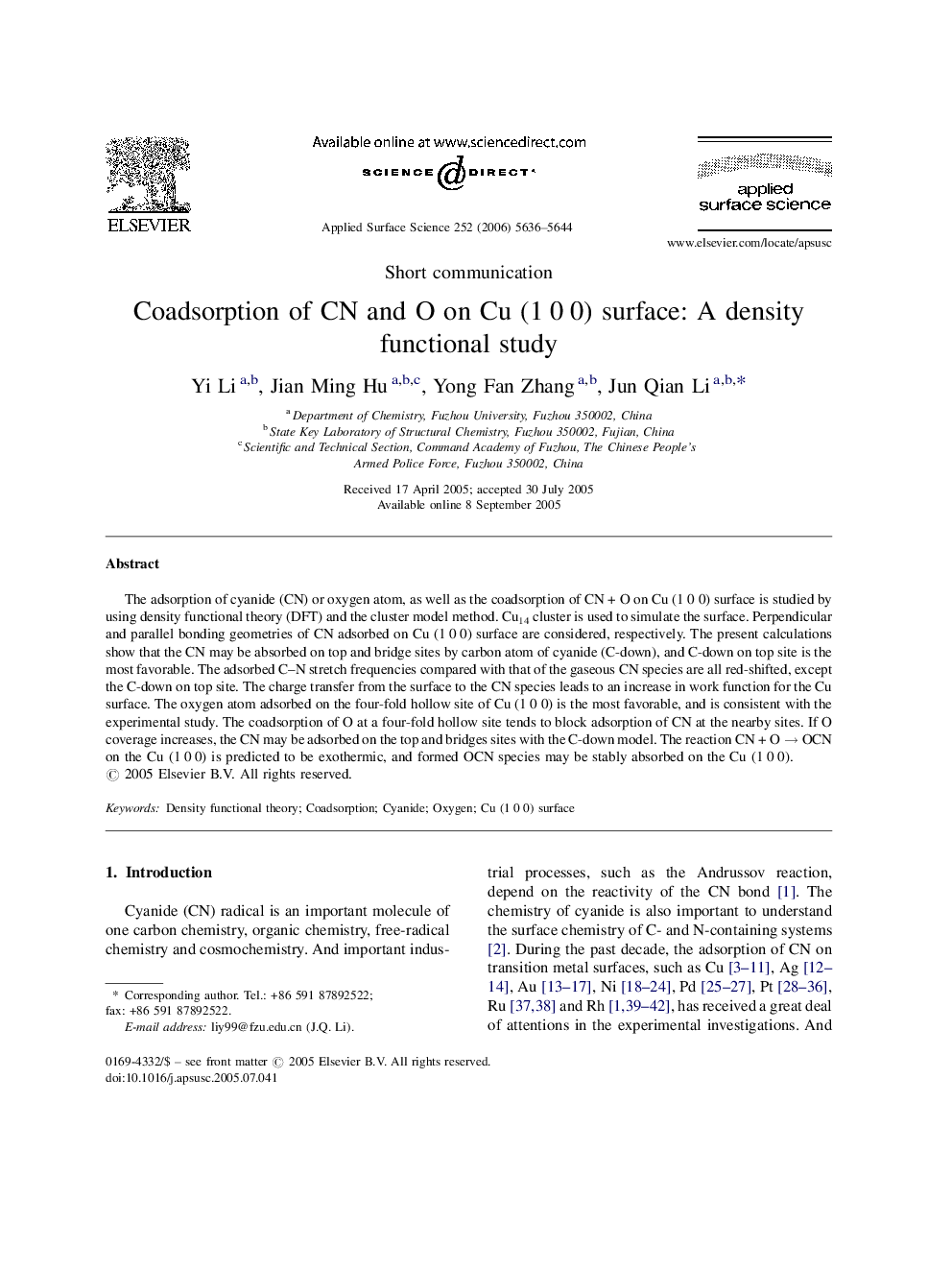| Article ID | Journal | Published Year | Pages | File Type |
|---|---|---|---|---|
| 5370367 | Applied Surface Science | 2006 | 9 Pages |
The adsorption of cyanide (CN) or oxygen atom, as well as the coadsorption of CN + O on Cu (1 0 0) surface is studied by using density functional theory (DFT) and the cluster model method. Cu14 cluster is used to simulate the surface. Perpendicular and parallel bonding geometries of CN adsorbed on Cu (1 0 0) surface are considered, respectively. The present calculations show that the CN may be absorbed on top and bridge sites by carbon atom of cyanide (C-down), and C-down on top site is the most favorable. The adsorbed C-N stretch frequencies compared with that of the gaseous CN species are all red-shifted, except the C-down on top site. The charge transfer from the surface to the CN species leads to an increase in work function for the Cu surface. The oxygen atom adsorbed on the four-fold hollow site of Cu (1 0 0) is the most favorable, and is consistent with the experimental study. The coadsorption of O at a four-fold hollow site tends to block adsorption of CN at the nearby sites. If O coverage increases, the CN may be adsorbed on the top and bridges sites with the C-down model. The reaction CN + O â OCN on the Cu (1 0 0) is predicted to be exothermic, and formed OCN species may be stably absorbed on the Cu (1 0 0).
